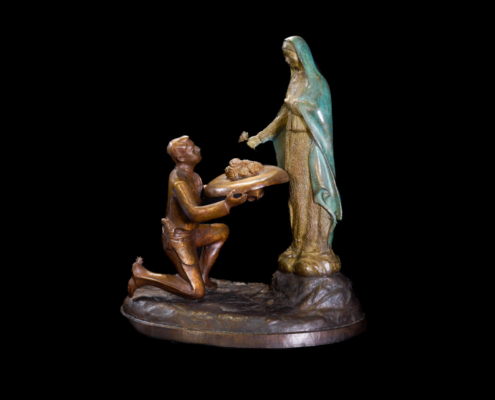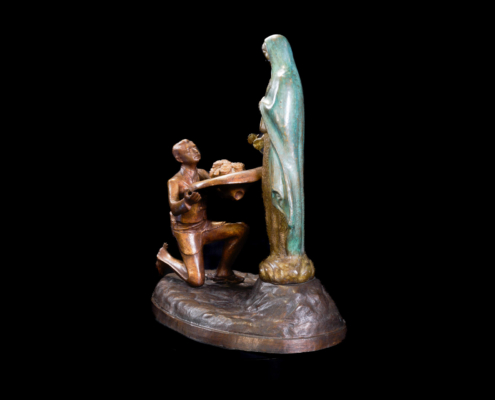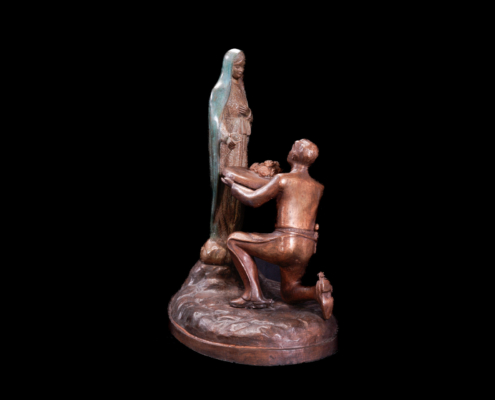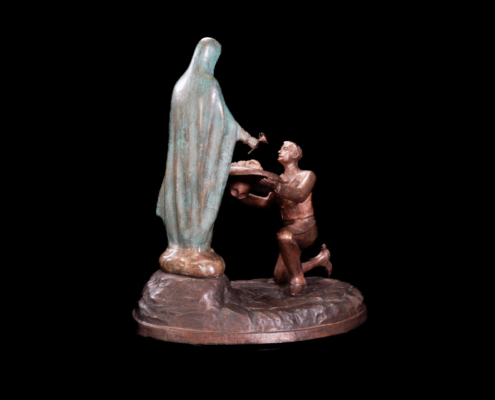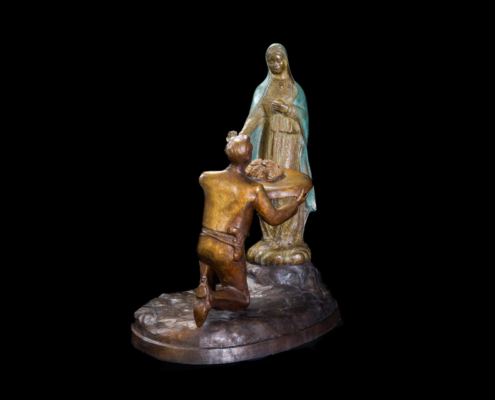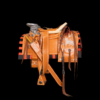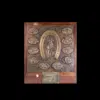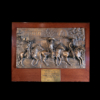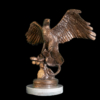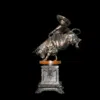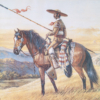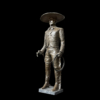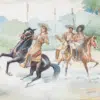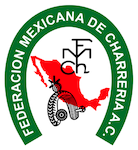GUADALUPANO TROPHY
The Guadalupano Trophy, an artistic work of profound symbolism on display at the Museo de la Charrería, encapsulates the moving legend of the apparition of the Virgin of Guadalupe to the Chichimeca Indian Juan Diego. This story has become a fundamental pillar of Mexican culture and faith.
In the work, the charro, dressed in his characteristic costume, represents Juan Diego, the messenger of the Virgin. The hat, emblematic symbol of the charrería, acquires a new meaning by representing the ayate on which the miraculous image was imprinted.
This sculpture of the Guadalupe Trophy is an inspiration of the master Humberto Aguirre, who was commissioned by Father Barajas himself and understood the meaning of the message to the Virgin of Guadalupe. The bronze work exhibits the image of the Morenita del Tepeyac with a charro prostrate at her feet. This trophy is appreciated both in the sporting and artistic fields, as it unites religion and charreria in the same path.
The Guadalupano had its genesis in 1962 at the initiative of Father Barajas, who was the Recording Secretary of the National Federation of Charros during the administration of Don Luis Gomez.
It is worth noting that in 1979, during his visit to Mexico, His Holiness John Paul II imparted his blessing to this emblematic sculpture. This artistic representation on the Guadalupe Trophy invites us to reflect on the deep spiritual connection between the Virgin of Guadalupe and the Mexican charro. Each time we admire this work, we are reminded of the importance of the faith, devotion and rich tradition surrounding this miraculous event. The Guadalupe Trophy at the Museo de la Charrería is a poignant testament to the enduring influence of the Virgin on the culture and identity of Mexico.

